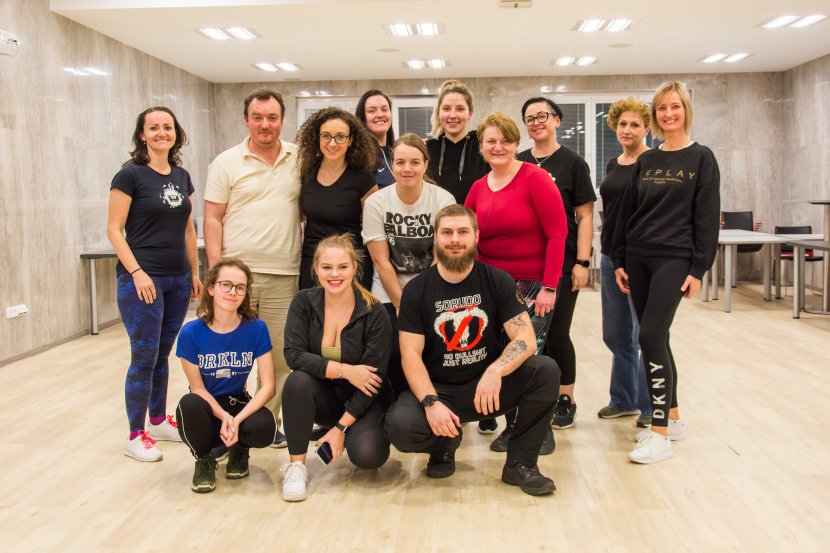In the introduction, a discussion was held on the topic of various critical moments that could have befallen the participants or directly affected their lives. Not only in the psychiatric and hospital environment, but also in public and private. "The initial familiarisation is important so that we know whether we need to focus more on assertive communication or to direct the teaching more towards self-defence," says Matěj Šesták at the beginning.
As the first demonstration, a plot was prepared where an aggressive newcomer, impeccably portrayed by the instructor himself, demands to enter the ward outside visiting hours. He helps himself by both verbal and physical pressure on the staff. The ward was invaded, for example, by a persistent drunkard, a knife-wielding rapist, but also by the patient's disgruntled and highly explosive husband.
"The aim was to test the reactions of the participants. The basic thing is, of course, not to provoke the aggressor even more and the ideal is if you manage to get out of the situation and perhaps call for help. Various assertive techniques are used to achieve this. We have demonstrated some of them, including, for example, the classic 'stop sign', which is a very effective tool for non-violently stopping aggressive behaviour even when a much bigger and stronger person is standing against you," the instructor continues.
When the situation does escalate into a physical attack, the participants had the opportunity to try their hand at, for example, escaping a chokehold or putting a person on the ground. "Everything has its physical limits, of course, but if the client learns the technique well, even a sixty-pound nurse can take down a hundred-pound man using the so-called overhead distraction. It's a gentle, safe technique that uses a combination of body function and human stability," Matěj Šesták further demonstrates. He then adds that this move can be followed up with an example of safe human pacification on the ground.
The employees greatly appreciated the Sorud demonstration, especially the practical part. When they not only tested themselves in a stressful situation, but also their ability to physically defend themselves. "To experience such a direct reality first-hand was very beneficial. I see a lot of potential in the course for us health professionals, when we need to handle situations like this calmly and try to control them as much as possible. At the same time it is very important to remember that we also need to take care of our own safety," said Libuše Sobotková, a nurse at the inpatient ward of the Mental Rehabilitation Centre.














